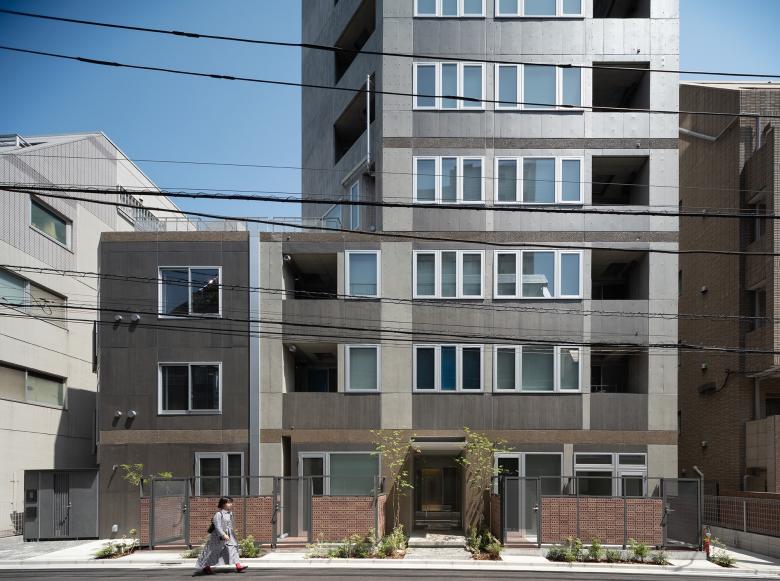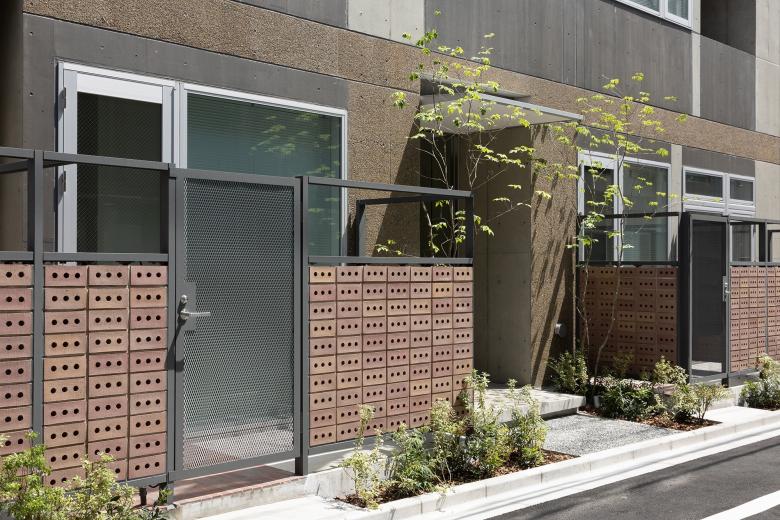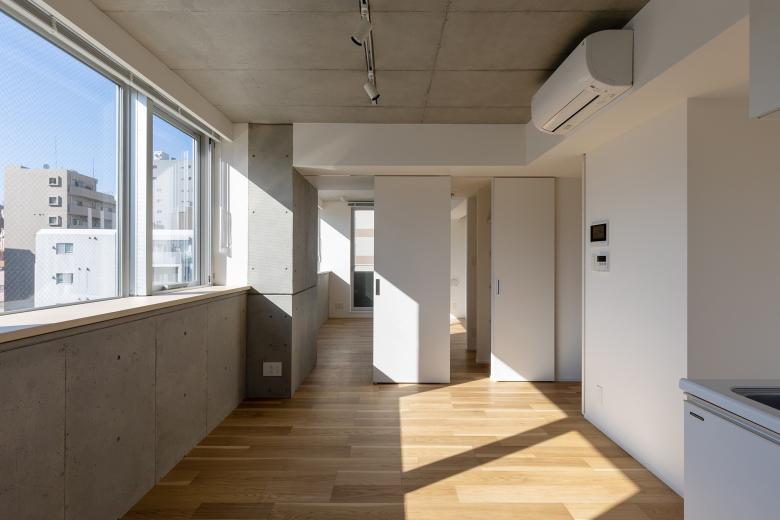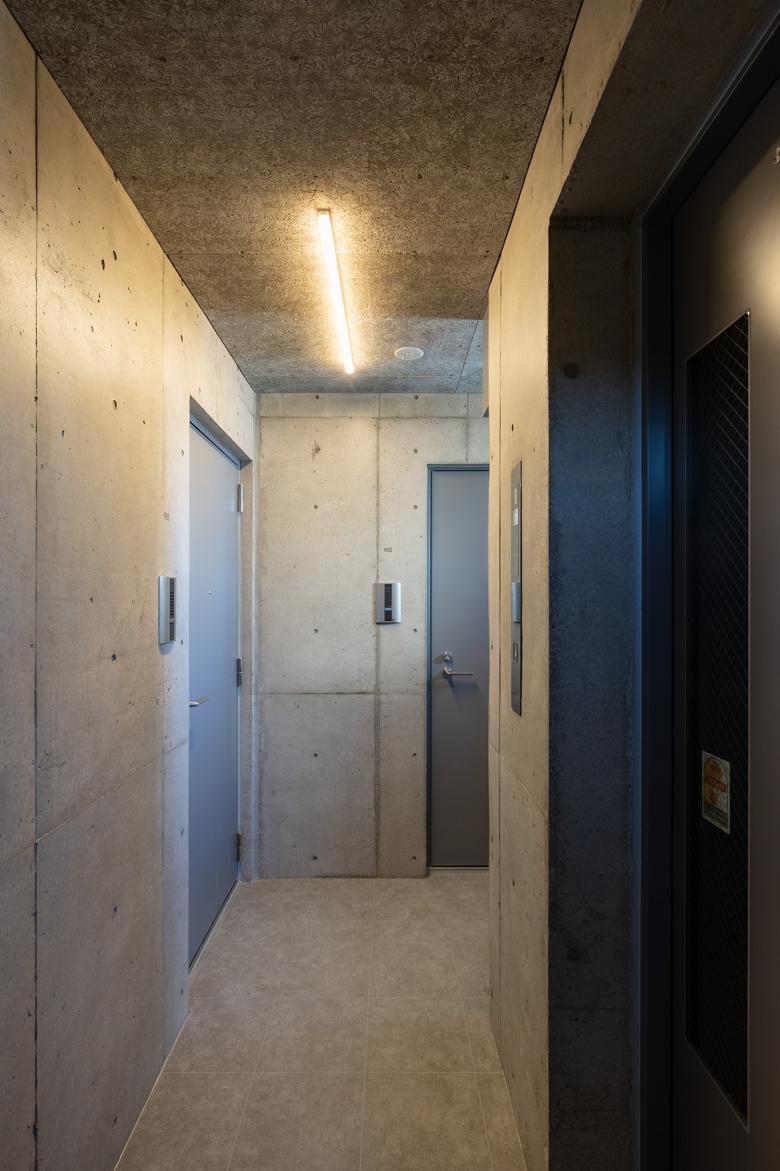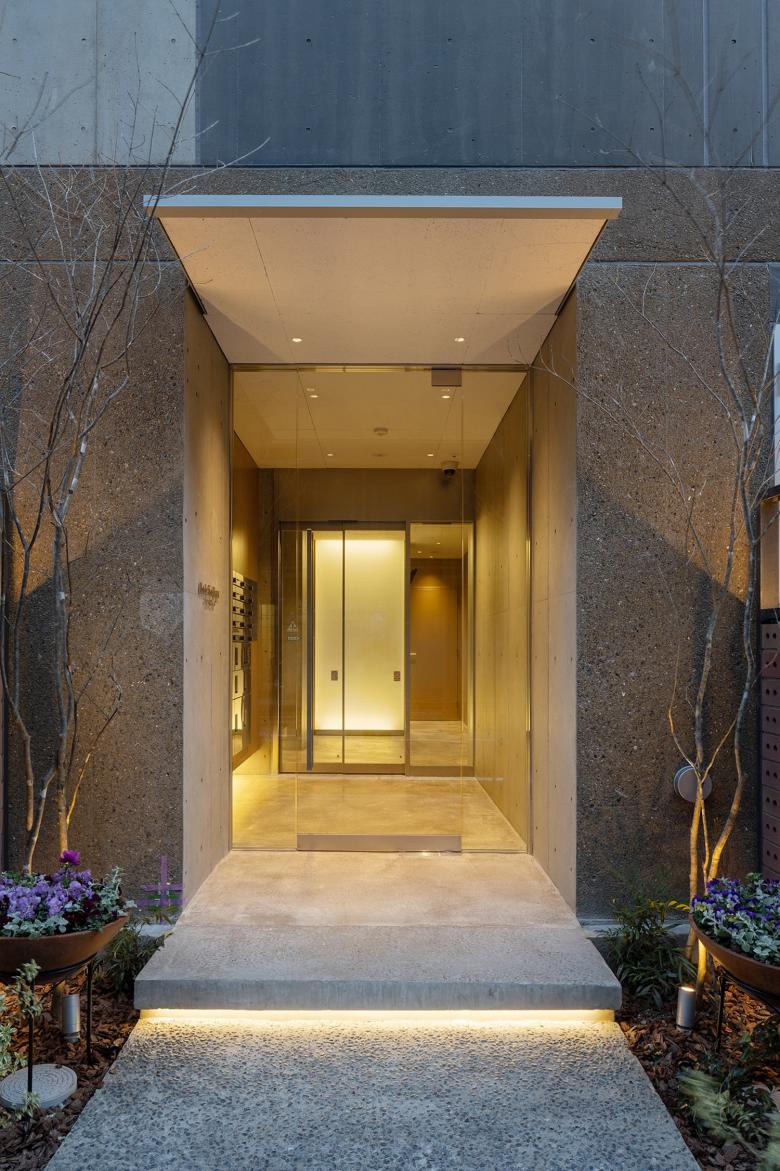Apartment-house in Yushima
Bunkyo-ku, Tokyo, Japan
It is said that Yushima got its name because it looked like an island from the sea, when the coastline was far inland. Even today, there are still steep slopes around the area, indicating that the topography of the district is full of ups and downs. In addition to the drastic physical experience of space, the dynamism of this area, where one can almost get lost in the folds of time, is another of its charms. In the Edo period (1603-1867), Yushima was home to samurai and merchant residences, and a wide variety of people lived here. In the midst of such a cityscape, we aimed to create a residential complex that supports a variety of modern lifestyles.
The 28 units consist of a total of 14 different layouts, allowing residents to choose from a variety of plans according to their composition and sense of values. All ground-floor units are maisonettes and are divided into two floors: the upper floor, which is connected to the city, and the lower floor, which offers a high degree of privacy, making the layouts suitable for SOHO and small businesses. Some units have private roof balconies, and most units have closets that double as workspaces.
The front street is less than 20 feet (6 meters) wide, and if the building were built to its full floor area ratio, the street would appear even more densely populated. The volume was divided into a high-rise and a low-rise building to accommodate the irregular shape of the site and to preserve the expanse of sky visible from the street while ensuring maximum floor area. The resulting contrasting forms are represented as a "tower" and a "hanare," respectively, and although continuous, they are structurally separated from each other. The tower in the high-rise is an open, earthquake-resistant, walled ramen structure with inverted beams that double as handrails and counters on the upper floors, allowing the eye to look skyward. On the other hand, Hanare, the low-rise building, has a wall structure with no internal or external columns, and each unit is a single dwelling, creating a highly independent space separated by floor and wall.
The exterior is based on cast concrete with a pattern of finishes that changes its appearance depending on the angle from which the building is viewed. Bricks in traditional Japanese colors were used to screen the private garden, which is set back from the exterior wall. As a building located between Kanda Myojin and Yushima Tenjin, it inherits the context of the surrounding area with its many temples and shrines.
- Architects
- Kenta SANO and Associates, Architects
- Year
- 2023
Related Projects
Magazine
-
-
Building of the Week
A Loop for the Arts: The Xiao Feng Art Museum in Hangzhou
Eduard Kögel, ZAO / Zhang Ke Architecture Office | 15.12.2025 -
